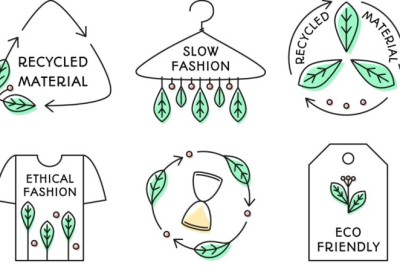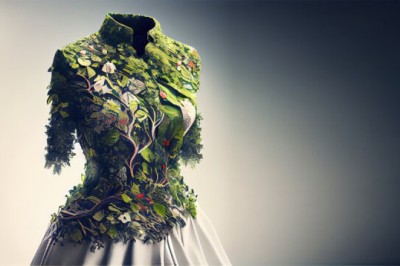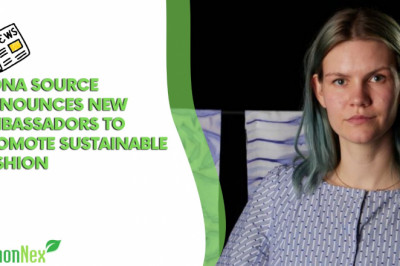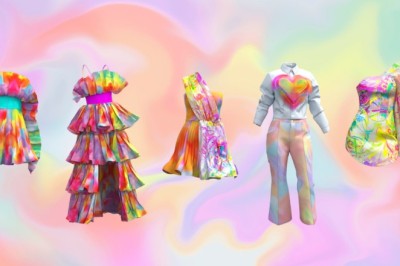views

Fashion Forward: Designing a Greener Future for the Industry
The fashion industry has long been associated with creativity, innovation, and self-expression. However, its environmental footprint has raised concerns about sustainability and ethical practices. As consumers become more conscious of the impact of their purchases, there is a growing demand for greener alternatives and sustainable solutions. In this article, we explore the challenges facing the fashion industry and the initiatives aimed at designing a greener future.
The Environmental Impact of Fashion
The fashion industry is one of the largest polluters globally, with significant environmental consequences at every stage of the supply chain:
-
Resource Depletion: The production of textiles requires vast amounts of water, energy, and raw materials. From cotton farming to fabric dyeing, each step contributes to resource depletion and environmental degradation.
-
Pollution: Textile manufacturing releases toxic chemicals and pollutants into air, water, and soil. Chemical dyes, finishes, and treatments pose health risks to workers and communities near production facilities.
-
Waste Generation: Fast fashion’s rapid turnover of trends leads to massive amounts of textile waste. Clothes often end up in landfills, where they contribute to greenhouse gas emissions and soil contamination.
-
Carbon Footprint: Transportation, manufacturing, and distribution processes contribute to the fashion industry's carbon footprint. Long supply chains and excessive packaging increase emissions and energy consumption.
The Shift Towards Sustainability
Recognizing the urgent need for change, the fashion industry is undergoing a transformation towards sustainability:
-
Material Innovation: Brands are exploring sustainable alternatives to conventional materials. This includes organic cotton, hemp, bamboo, recycled polyester, and innovative materials like Piñatex (made from pineapple fibers) and Tencel (made from wood pulp).
-
Circular Economy: The concept of a circular economy is gaining traction, emphasizing resource efficiency and waste reduction. Brands are implementing strategies like clothing rental, resale, and upcycling to extend the lifespan of garments and minimize waste.
-
Ethical Sourcing: Consumers are demanding greater transparency and accountability in supply chains. Brands are investing in ethical sourcing practices, ensuring fair wages, safe working conditions, and respect for human rights throughout their operations.
-
Slow Fashion Movement: The slow fashion movement promotes mindful consumption and sustainable production practices. It encourages consumers to prioritize quality over quantity, invest in timeless pieces, and support brands with ethical and sustainable values.
-
Technology and Innovation: Advancements in technology are driving sustainable innovation in the fashion industry. From 3D printing and digital design tools to blockchain traceability and waterless dyeing techniques, technology is enabling more sustainable and efficient production processes.
Designing a Greener Future
To achieve a truly sustainable future for the fashion industry, stakeholders must collaborate and innovate across the entire value chain:
-
Consumer Education: Educating consumers about the environmental and social impacts of their purchasing decisions is essential. By raising awareness and promoting conscious consumption habits, consumers can drive demand for sustainable fashion.
-
Industry Collaboration: Collaboration among brands, manufacturers, NGOs, and policymakers is crucial for driving systemic change. Collective initiatives like the Sustainable Apparel Coalition and Fashion Pact bring together industry leaders to set common goals and standards for sustainability.
-
Regulatory Frameworks: Governments play a vital role in shaping policies and regulations that incentivize sustainability and hold businesses accountable for their environmental and social impacts. Policies addressing waste management, pollution control, and labor rights are essential for driving industry-wide change.
-
Innovation and Research: Continued investment in research and innovation is needed to develop sustainable materials, technologies, and business models. Collaboration between academia, industry, and research institutions can accelerate progress towards greener solutions.
-
Consumer Empowerment: Empowering consumers to make informed choices through labeling, certification schemes, and transparency initiatives is crucial. Tools like eco-labels, QR codes, and blockchain-enabled traceability enhance transparency and enable consumers to verify product claims.
Conclusion
The fashion industry stands at a critical juncture, facing unprecedented environmental and social challenges. However, it also presents an opportunity for transformation and innovation towards a greener and more sustainable future. By embracing sustainability as a core value and adopting holistic approaches that consider environmental, social, and economic factors, the fashion industry can design a future that is not only fashionable but also ethical and environmentally responsible.
As consumers, brands, and policymakers come together to drive positive change, the vision of a fashion industry that respects people and the planet becomes increasingly achievable. By working collaboratively and embracing innovation, we can pave the way for a fashion-forward future that leaves a positive legacy for generations to come.











Comments
0 comment